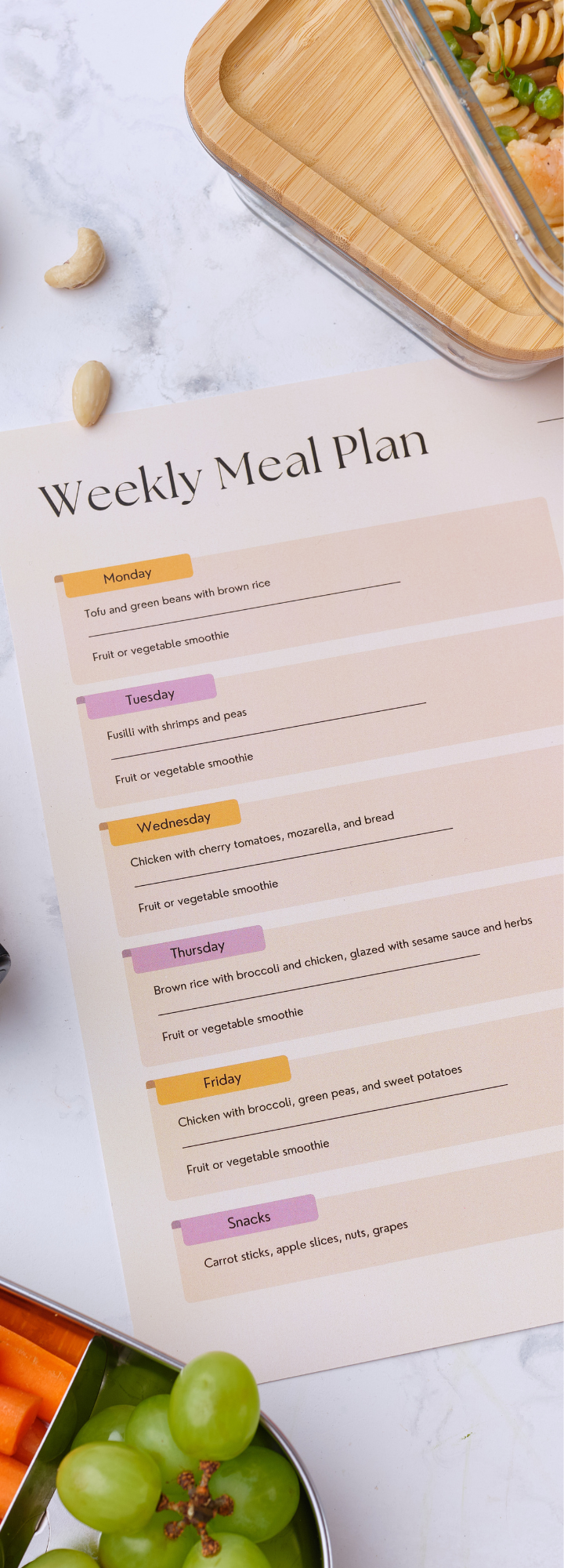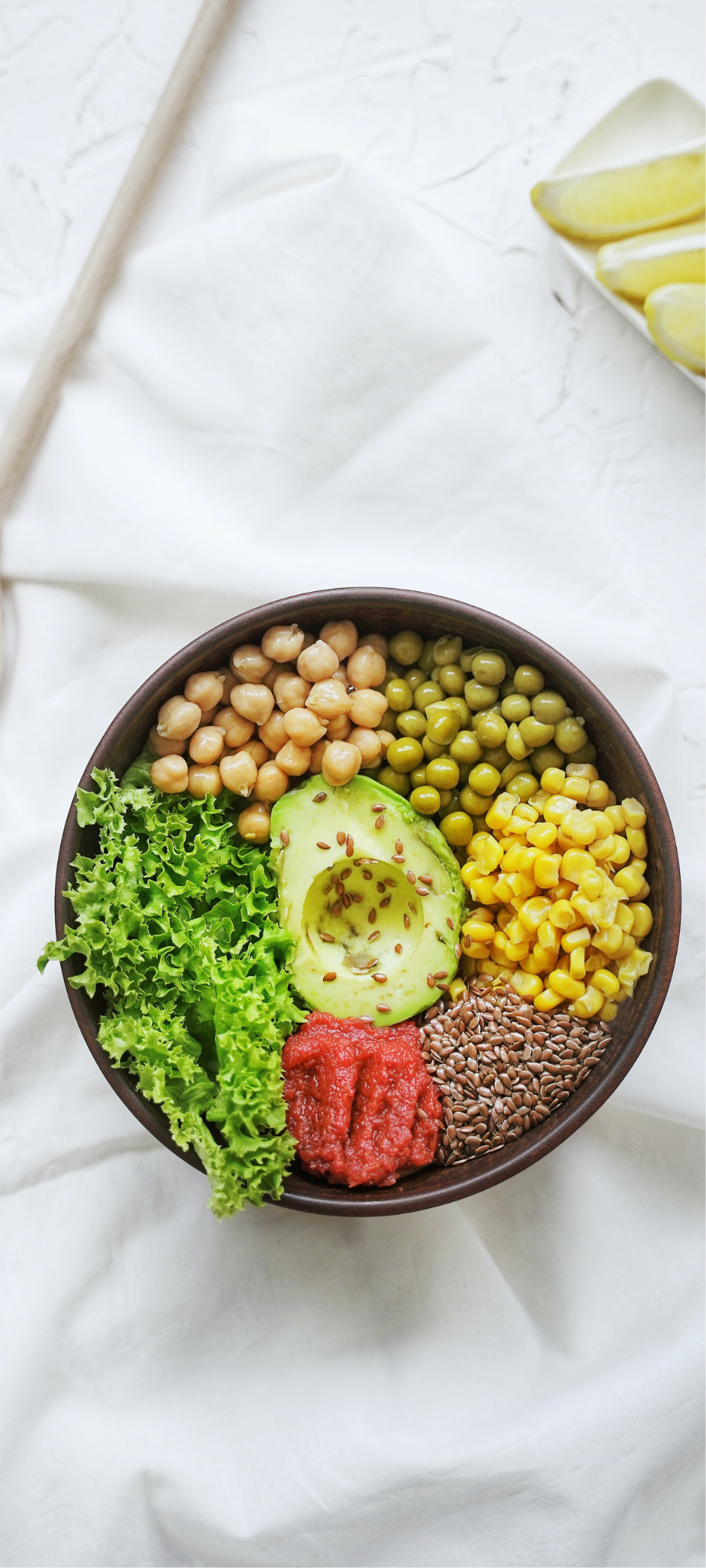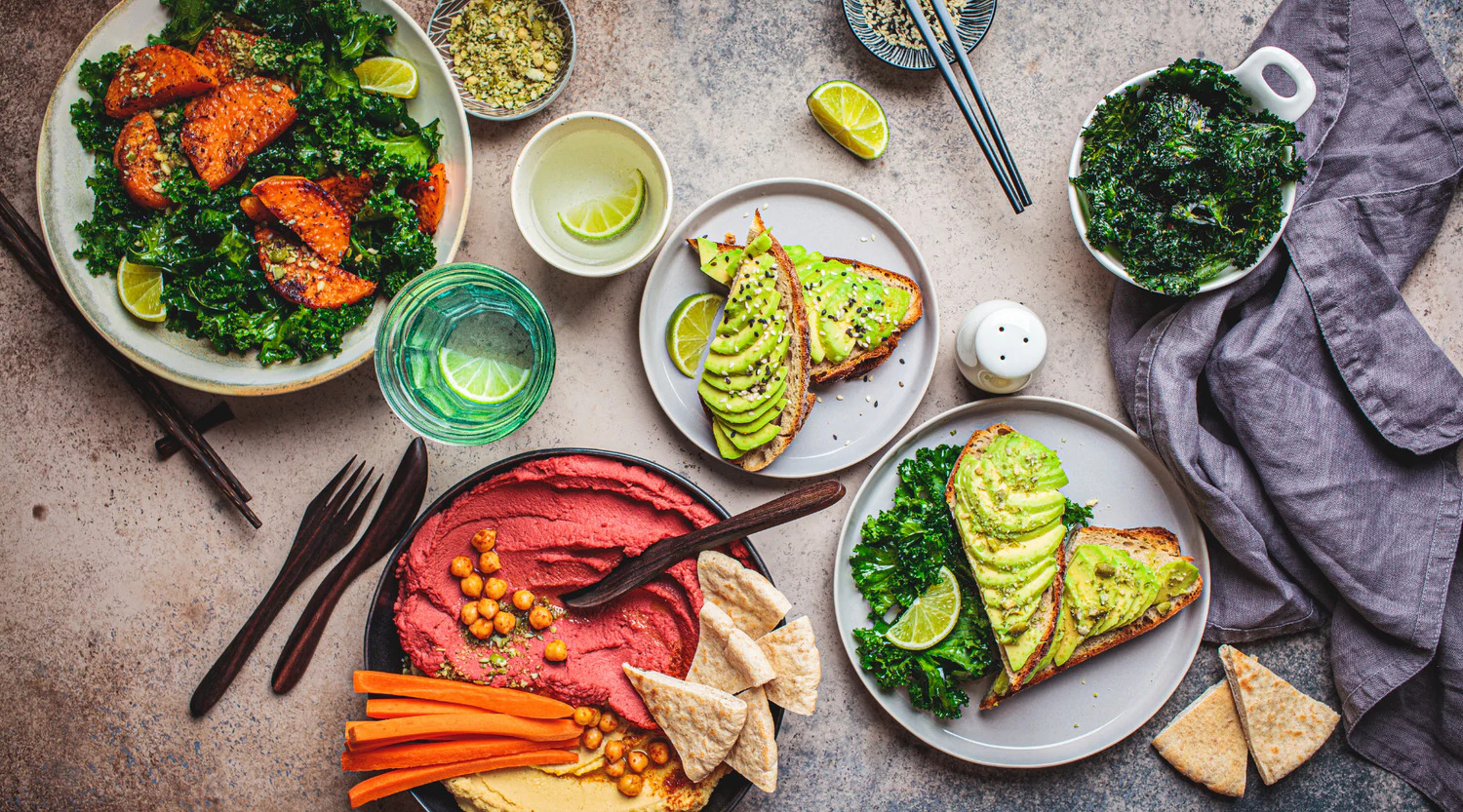🥕I've got no time to cook healthy meals.
🥕Healthy eating is just too expensive.
🥕Half of our vegetables always end up in the trash.
🥕I struggle to find ideas for nutritious, wholesome meals.
If any of the above resonates with you, maybe it's time for a different approach. AKA meal planning.
Meal planning allows you to organize and prepare meals ahead of time. It offers numerous benefits, including saving time and money, reducing food waste, and promoting healthier eating habits.
It's the perfect solution to all your healthy eating objections.
In this blog post, we will explore the benefits of meal planning, provide tips on how to get started, and how to plan healthy, balanced meals.
BENEFITS OF MEAL PLANNING
SAVES YOU TIME
------One of the primary benefits of meal planning is that it can save you significant time. And we all could do with some extra time! By planning your meals ahead of time, you can avoid the daily dilemma of figuring out what to cook for dinner. This can also reduce the need for frequent trips to the grocery store, which can be time-consuming and draining.
So yes, you do have time to cook healthy meals, it only takes a bit of planning ;-)
SAVES YOU MONEY
------Meal planning can also save you money. When you plan your meals in advance, you can buy groceries in bulk and take advantage of sales and discounts.
This can also help you avoid impulse purchases and reduce food waste, as you only buy what you need.
REDUCES FOOD WASTE
------Meal planning can help reduce food waste by allowing you to use up ingredients before they go bad. No more veggies in your fridge watching you order yet another takeout!
By planning your meals and making a list of the ingredients you need, you can avoid buying too much of something and having it go to waste.
PROMOTES HEALTHIER EATING HABITS
------Planning and prepping your meals in advance makes you more likely to choose nutritious foods and avoid unhealthy options.
It will reduce the reliance on processed or fast food, increase the consumption of fruits and vegetables, and help to balance macronutrients like protein, carbohydrates, and fats. This can help you achieve your health and fitness goals and improve your overall well-being!
HOW TO GET STARTED WITH MEAL PLANNING
1. Set a goal
The first step in meal planning is to set a goal. This could be to save money, eat healthier, or reduce food waste. Whatever your goal, it will help guide your meal-planning process. If, for example, you want to save money, your focus will be shifted toward seeking out bargains and buying in bulk.
2. Choose a planning method
There are many different methods for meal planning, including using a paper planner, a digital planner, or a meal planning app. Choose the method that works best for you and your lifestyle.
3. Schedule a time
Set aside a specific time each week to plan your meals, whether on Sunday evening or any other day that works for you. This will help you establish a routine and ensure enough time to plan your meals for the week ahead.
4. Make a list of meals
Make a list of meals you and your family love or dishes you would like to try. Scout platforms like Pinterest, blogs, Instagram, or recipe books for meal ideas. Just search for healthy or plant-based meals, and you'll find a ton of ideas! BTW, we've got some super yummy RECIPES for you!
Group them according to breakfast, lunch, dinner, and snacks, and note the main ingredients you need.
5. Take inventory
Take inventory of your pantry, fridge, and freezer. Identify what ingredients you already have and what you need to buy. Make a shopping list of the ingredients you need. Stick to your list when you go grocery shopping to avoid impulse purchases.
6. Plan your meals
Use your chosen planning method to plan your meals for every day of the week. Start with dinner, which is usually the most complicated meal to plan. Consider your schedule and plan meals that are easy to prepare on busy nights.
A quick pasta may be easier for nights when the kids have sports, and a roasted chicken with all the trimmings may be easier for a night without activities. You can also include breakfast, lunch, and snacks in your plan or add them later as you get into the habit of planning.
7. Prep in advance
Consider prepping some of your meals to save even more time. This could include chopping vegetables, cooking rice, or marinating meat. Prepping in advance can help make mealtime a breeze.
8. Batch cooking
Batch cook and freeze meals for later. It will save you time, allow you to cook fresh produce before it goes bad, and save costs on electricity. After a long day of hard work, your tired self will thank you if you can simply heat something up!
9. Repeat and adjust
Meal planning is an ongoing process. Each week, review your plan and adjust it as needed. This will help you refine your meal-planning skills and keep things interesting when you try new dishes every week.

HOW TO PLAN A BALANCED MEAL

Planning a balanced meal involves selecting various foods from different food groups to ensure you get all the essential nutrients your body needs.
Tips on how to plan a balanced and healthy meal:
Start with a protein source
Include a protein source in every meal, such as chicken, fish, beef, tofu, or legumes. Protein is essential for building and repairing muscles and helps keep you full and satisfied. We're all for plant-based eating around here. Here are some great plant-based protein sources.
Add a variety of vegetables
Aim to include at least two servings of vegetables in every meal, such as leafy greens, carrots, broccoli, peppers, or tomatoes. Vegetables provide fiber, vitamins, and minerals essential for optimal health.
Choose whole grains
Include a serving of whole grains in every meal, such as brown rice, quinoa, whole-wheat bread, or whole-grain pasta. Whole grains provide complex carbohydrates, fiber, and other essential nutrients that are important for energy and digestive health.
Include healthy fats
Incorporate healthy fats into your meals, such as olive oil, avocado, nuts, or seeds. Healthy fats are essential for brain health, hormone regulation, and the absorption of certain vitamins.
Don't forget about fruit
Include a serving or two of fruit with one or two meals, such as berries, apples, bananas, or oranges. Fruit provides vitamins, minerals, and fiber that are important for overall health.
Pay attention to portion sizes
Portion control is essential for maintaining a balanced and healthy diet. Use a food scale, measuring cups, or other tools to ensure you eat appropriate portions according to your age, sex, activity levels, and nutritional needs.
Limit processed foods and added sugars
Try to minimize the amount of processed foods and added sugars in your meals. Be mindful of things like butter, condiments, added salt, processed meat alternatives, and healthy foods in excess, such as honey. These foods can be high in calories, unhealthy fats, sugar, and sodium. All of which can contribute to chronic health conditions such as obesity and heart disease.
READ MORE: How to build a healthy plate







